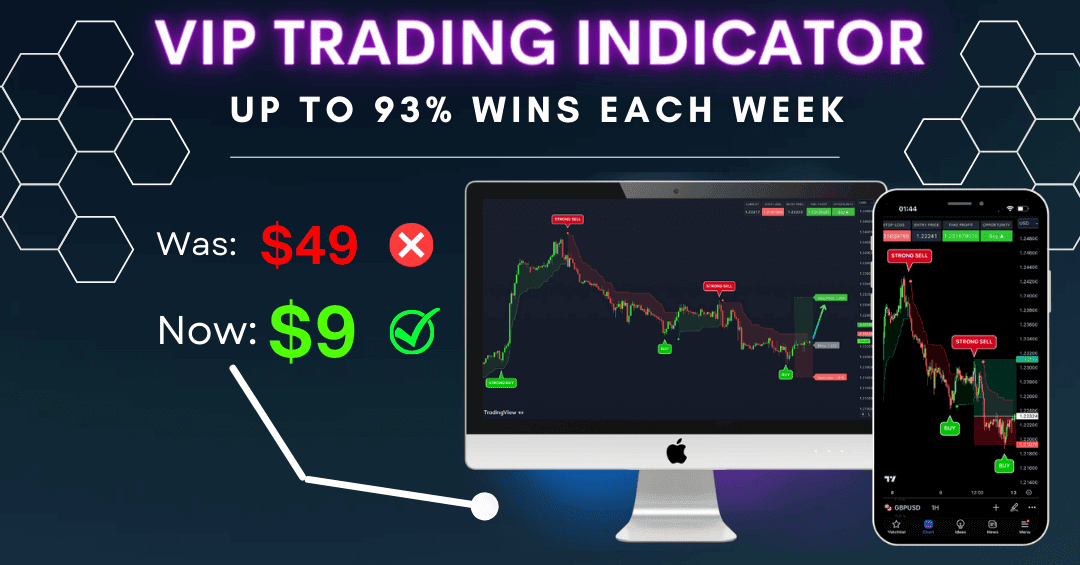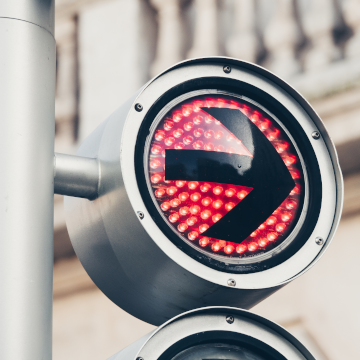🚀 Introduction: Why Trade Optimization Matters
Stop-loss and take-profit levels are the foundation of any disciplined trading strategy. Get them wrong, and you’ll either get stopped out too early or leave too much profit on the table. It’s a delicate balance – and one that most human traders struggle to get consistently right. Enter artificial intelligence.
AI isn’t just about generating buy or sell signals anymore. It’s reshaping the way we think about trade management, especially when it comes to optimizing exit points. In this post, we’ll explore how AI is changing the game for stop-loss and take-profit levels, making traders smarter, faster, and more profitable.
That’s why picking a trusted trading bot is crucial when starting with AI trading – we recommend WallStreet Forex.
⚖️ The Challenge with Static Stop-Loss & Take-Profit Strategies
Traditionally, traders set stop-loss and take-profit levels based on:
- A fixed number of pips or points
- A percentage of the entry price
- A fixed risk/reward ratio (like 1:2 or 1:3)
- Nearby support/resistance zones
These methods work – kind of. But they also assume that:
- Market volatility stays the same (it doesn’t)
- Price action follows predictable patterns (it rarely does)
- You can judge every setup manually (you can’t)
The result? Overly tight stop-losses, missed profits, and inconsistent outcomes.
🤖 Enter AI: Dynamic, Data-Driven Trade Management
AI brings adaptability. Instead of relying on fixed values, AI uses historical data, volatility metrics, and real-time market conditions to dynamically adjust stop-loss and take-profit levels for each trade.
This approach is called dynamic trade optimization, and it’s where machine learning truly shines.
What AI actually does:
- Analyzes market behavior before and after trade entries
- Predicts the likelihood of price reaching certain levels
- Calculates optimal exit zones based on risk-adjusted outcomes
- Continuously adapts as new data comes in
🧠 How AI Learns to Set Optimal Levels
AI systems don’t guess. They learn. Here’s how the process works:
1. Training on Historical Data
AI models ingest massive amounts of past price data. They learn what price patterns preceded profitable trades, how much prices typically move, and when reversals happen.
2. Identifying Optimal Thresholds
The model runs thousands of simulated trades across different assets and timeframes. It tweaks stop-loss and take-profit values to find what would’ve produced the highest Sharpe ratio, lowest drawdown, or best win rate.
3. Dynamic Recalibration
Once deployed in real-time trading, the AI continues to learn. If market volatility increases, it widens stop-loss levels. If momentum fades faster, it tightens take-profit levels to secure gains
Forex Gold Investor targets predictable price movements in gold using automated trading strategies backed by years of performance data.
before reversals.
📊 Tools AI Uses to Optimize Exits
Here are some of the tools and data AI relies on to make those adjustments:
- ATR (Average True Range): Helps adjust SL/TP to market volatility
- Market Regimes: AI can detect whether markets are trending, ranging, or choppy
- Order Flow & Volume: AI can interpret where liquidity zones may trigger reversals
- Sentiment Analysis: Pulls in news, social data, or Twitter sentiment to anticipate sharp moves
- Price Action Recognition: AI identifies candlestick patterns or breakouts to preempt trend shifts
🎯 Benefits of AI-Optimized Stop-Loss and Take-Profit
1. Better Risk Management
By adapting to market conditions, AI helps avoid both overly tight and overly loose stop-losses, which reduces whipsaws and unnecessary losses.
2. Improved Win Rate
Smart take-profit zones mean exiting trades before price turns – maximizing the number of trades that end in the green.
3. Higher Profit per Trade
AI can identify when to let a trade “breathe” and when to cut it short – often leading to a better average profit-per-trade over time.
4. Emotional Detachment
AI sticks to the data. No fear. No greed. Just logic and math. That’s a huge advantage over manual traders.
5. Scalability
Once the model is trained, it can optimize trade exits across hundreds of symbols and timeframes – something a human could never do.
🛠️ Platforms & Tools Offering AI-Based Trade Optimization
Several modern trading platforms now include AI modules or plugins that offer trade exit optimization:
✅ MetaTrader 5 with AI Plugins
- Custom EAs (Expert Advisors) built with neural networks
- Many AI-based bots on MQL5 marketplace include SL/TP optimization
✅ Trade Ideas
- “Holly” AI engine uses Monte Carlo simulations to optimize both entries and exits
- Provides dynamically adjusted profit targets based on backtested models
✅ Tuned
- Offers pre-trained AI bots that manage crypto positions with dynamic SL/TP logic
- Visual dashboard helps compare performance with and without AI exit strategies
✅ Darwinex
- Uses AI to analyze trader performance and auto-optimize parameters, including SL/TP, to reduce drawdowns
✅ QuantConnect & Backtrader (for coders)
- Open-source platforms where you can build and train your own AI-based trade managers
- Integrate ML models with historical data to tune exits
Options Pop gives you 3 weekly trade alerts powered by AI trading models-perfect for quick 2-9 day opportunities with precise entries.
📉 Real-World Example: SL/TP Optimization in Action
Let’s say you’re trading EUR/USD with a simple moving average crossover strategy. Normally, you’d set a 30-pip stop-loss and 60-pip take-profit.
Here’s what an AI system might do instead:
- Detects that volatility is high (based on ATR, news sentiment, and recent price swings)
- Sets a wider stop-loss of 50 pips and a take-profit of 90 pips based on historical performance under similar conditions
- Monitors price action in real time. If momentum slows earlier than expected, it exits the trade at 70 pips profit – before the reversal.
Over time, this level of nuance adds up to better results – more wins, less stress, and better capital efficiency.
📚 How to Start Using AI for SL/TP Optimization
You don’t need to be a coder or hedge fund manager to take advantage of this.
Beginner Path:
- Use AI-enabled platforms like Trade Ideas or Tuned
- Choose bots or strategies that specifically mention SL/TP optimization
- Start on demo, then go live when confident
Intermediate Path:
- Build your own bot using tools like MetaTrader + MQL5
- Use technical indicators like ATR and volatility bands for dynamic exits
- Test different configurations using backtesting software
Advanced Path:
- Use Python libraries (e.g., scikit-learn, TensorFlow) to train ML models on your trading data
- Feed in historical trade outcomes and market context
- Train models to predict optimal exit points based on real-time input
⚠️ Watch Outs: What AI Can’t Do
Let’s be real – AI isn’t magic. It has limitations:
- It can’t predict black swan events
- It might overfit historical data
- It can’t replace good judgment and sound strategy
And most importantly, AI needs quality data. If your model is trained on garbage, it’ll make garbage decisions – fast.
🧠 Best Practices When Using AI for Exit Optimization
- ✅ Backtest on multiple assets and timeframes
- ✅ Use realistic trading costs in simulations (slippage, spreads, fees)
- ✅ Start small – test with micro lots or paper trading
- ✅ Monitor AI performance over time, not just in short bursts
- ✅ Combine AI logic with your own manual insights
AI should enhance your edge, not replace your brain.
🔮 The Future of AI-Based Trade Optimization
We’re heading toward a world where:
- AI adapts your SL/TP in real-time based on news flow
- Portfolio-wide optimization adjusts all trades for maximum capital efficiency
- You receive alerts saying “Take profit now – probability of reversal just spiked 80%”
- AI agents work as collaborative co-traders, not just background systems
This isn’t a dream – it’s already starting to happen. The traders who understand how to work with AI will be the ones who stay ahead.
✅ Conclusion: Smarter Exits, Better Profits
Optimizing your stop-loss and take-profit levels can make or break your strategy – and AI gives you a powerful edge in getting it right. Whether you’re trading forex, crypto, or stocks, adding AI-powered trade management to your toolbox can drastically improve your consistency and profitability.
So stop relying on guesswork or static rules. Let the machines do the math – and use that data to exit smarter, protect your capital, and grow your account like a pro.
Want help choosing an AI trade manager or setting up your first optimized system? Drop a comment – or check out our recommended tools and walkthroughs in the blog.









Leave a Reply